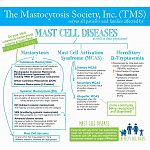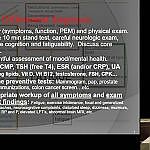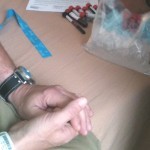Remy
Administrator
Exciting news...a potential biomarker!!
Read the whole article here:
Read the whole article here:
The latest study, led by Joshua Milner at the National Institute of Allergy and Infectious Diseases, involved 96 people with EDS-HT and mast cell issues. POTS symptoms were common, especially gut problems like Irritable Bowel Syndrome.
The study participants had another thing in common: higher-than-normal levels of a protein called tryptase in their blood. Tryptase is part of the immune system’s reaction and has been linked to a handful of core EDS-HT and POTS symptoms, Milner says.
"Tryptase can contribute to pain sensitivity," he told me. "It can contribute to blood vessels doing funny things, and it can contribute to how your connective tissue, your bones and joints, are made."
Most people with mast cell issues actually have normal levels of tryptase, so the group Milner and his colleagues tested represented just a small subset of mast cell patients. But that subset did seem to have a unique genetic signature: an extra copy of a gene called TPSAB1. Under normal circumstances, TPSAB1 makes a form of tryptase called alpha-tryptase. People with a double dose of the gene are getting a double dose of the protein, too.
Armed with this clue, the researchers then went back through thousands of patient records for healthy people. When they looked at the DNA results of people with high tryptase levels, they found that all of them also had the TPSAB1 mutation. The scientists then interviewed a number of these supposedly hearty specimens and found that all of them were living with symptoms that sounded suspiciously similar to those of EDS-HT, POTS, and MCAS. They'd just never been diagnosed. (This is unsurprising—the average time to diagnosis for a person with EDS-HT is 10 years.)
In short, Milner and his team had discovered a genetic biomarker for Ehlers-Danlos Syndrome. Now, EDS-HT is a very variable condition, and the few experts that do exist suspect it's actually a bunch of different diseases called by the same name. Still, this finding represents one possible clinical test for what has been an un-testable illness.












